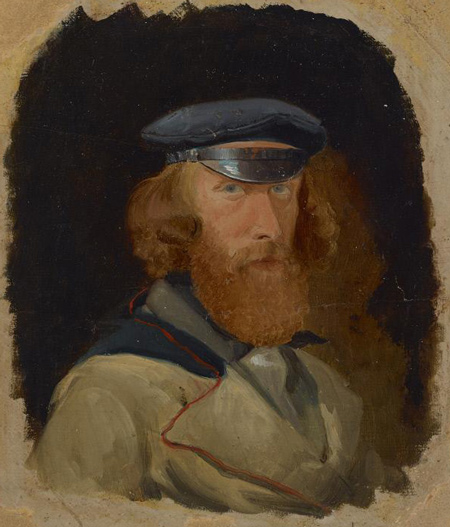Self-Portrait (c. 1848)
by Paul Kane (1810–1871)
Oil on paper, 8 1/8 x 6 11/16 inches (20.6 x 17 cm). Courtesy Stark Museum of Art, Bequest of H.J. Lutcher Stark, 1965, collections.starkculturalvenues.org/objects/42773/selfportrait?ctx=c9bd272f-d876-4171-b778-1ab5e0b60c91&idx=19.
Paul Kane (1810–1871) painted in the Canadian Northwest which then included the Hudson’s Bay Columbia District. His field sketches, notes, and paintings are a valuable resource for ethnologists. His autobiographical 1859 Wanderings of an Artists Among the Indians of North America—available at https://archive.org—also provides useful information.
Pages with Paul Kane’s Art
Bison Gallery
Art featuring the iconic buffalo
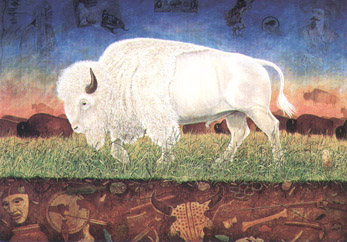
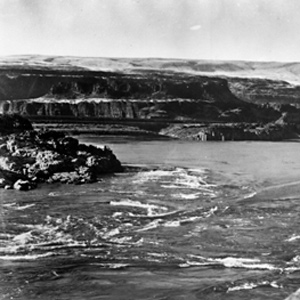

Here the Columbia was “an agitated gut Swelling, boiling & whirling in every direction.” Even so, Cruzatte and Clark agreed that they could run the canoes through.
The Nez Perces
by Kristopher K. Townsend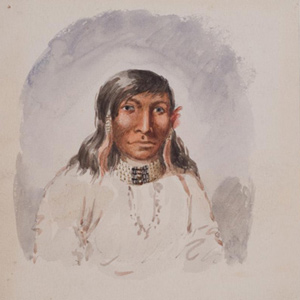

First encountered September 1805 when John Colter met them on Lolo Creek near Travelers’ Rest, they would remain with the expedition in one way or another until 25 October 1805 saying their goodbyes at Rock Fort at The Dalles of the Columbia River. They were together again between 23 April 1806 and 4 July 1806, the expedition’s longest period of contact with any Native American Nation.
The Walla Wallas
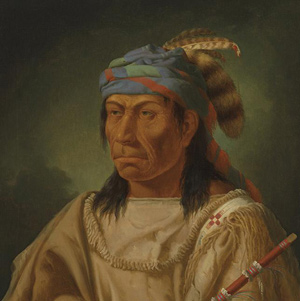

Walla Wallas, sometimes Waluulapam and sometimes on this site as Walula, are a Sahaptin-speaking indigenous people that lived primarily along their namesake river. There has been disagreement among historians regarding the nation’s etymology.
April 6, 1806
Into the Columbia River Gorge
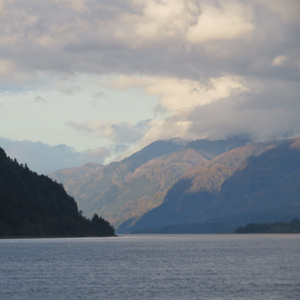

The members pack up the last of the dried meat and paddles into the Columbia River Gorge. Lewis remarks on the spring flood, a ‘remarkable’ Beacon Rock, and the blindness common with the local People.
October 31, 1805
Portaging the "Great Shute"
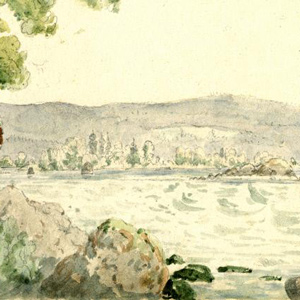

Cascades of the Columbia, WA Clark, J. Field, Cruzatte, and Weiser scout the “Great Shute” of the Columbia. Cruzatte returns to the main party and two canoes are portaged. Meanwhile, Clark continues down the river and views a tall rock,Beacon Rock, beside a gentle current.
The Palouses
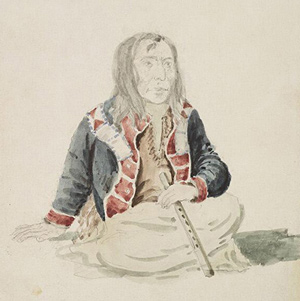

At the time of the Lewis and Clark Expedition, the Palouses had coalesced around four primary villages on the lower Snake River: Penewawa, Almota, Wawaiwai, and Palus. Lewis and Clark estimated their population as 2,300 which included Northern Nez Perces.
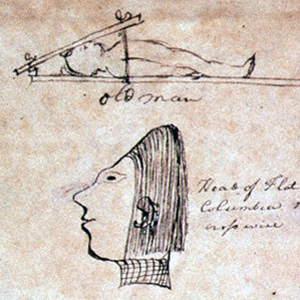

The most remarkable trait in the Clatsop Indian physiognomy, Lewis wrote on 19 March 1806, was the flatness and width of their foreheads, which they artificially created by compressing the heads of their infants, particularly girls, between two boards.
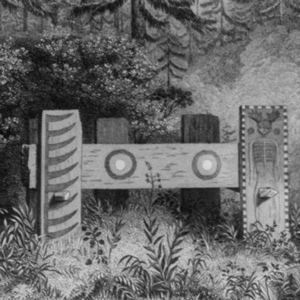

Concomly was a prominent Chinook citizen and leader whose people lived on the north side of the Columbia estuary, on the shore of Haley’s Bay. On November 17, 1805, he introduced himself to Lewis and Clark at Station Camp.
April 3, 1806
Mapping the Willamette River
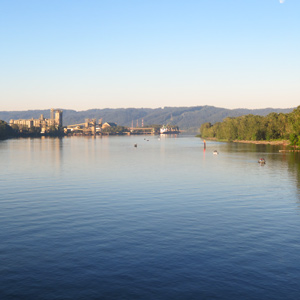

Clark concludes his exploration of the Willamette River and learns that a smallpox epidemic had devastated the local population. At Provision Camp, Lewis demonstrates the air gun as a defensive measure.
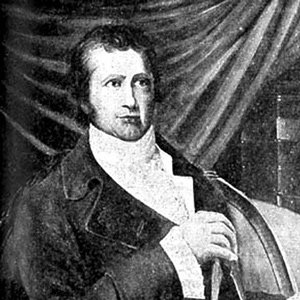

The life and times of these three explorers intertwined in a number of odd and interesting ways, often brought together by far-reaching hand of Thomas Jefferson. Tracing these connections opens a window onto every conceivable aspect of the period.
November 1, 1805
Describing the Watlalas
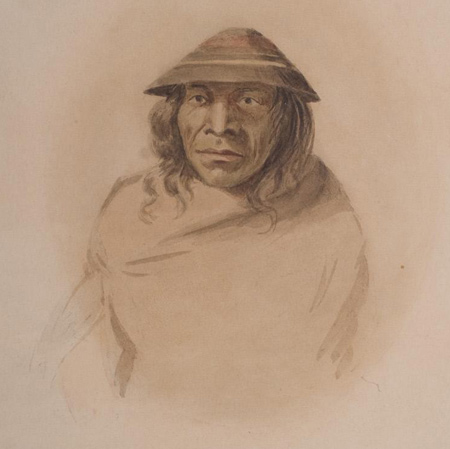

North Bonneville, WA The day is cold as most of the men move baggage and canoes around the Cascades of the Columbia. Clark describes Upper Chinookan Watlala Indians living in the area.
A Submerged Forest
by John W. Jengo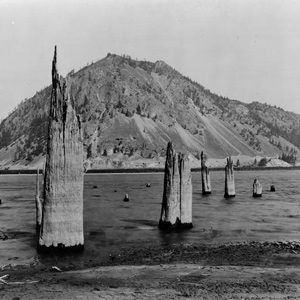

On 30 October 1805, Clark documented the presence of a submerged forest, which along with the burning bluffs of northeastern Nebraska, the “Burnt Hills” of North Dakota, and White Cliffs of the Missouri in central Montana, remain one of the expedition’s most famous geological observations.
The Clatsops
by Kristopher K. Townsend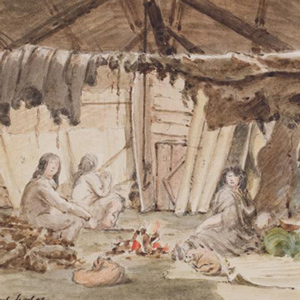

The creek where Coyote built his legendary house—today’s Neacoxie Creek—flows north to south bisecting nearly the length of the Clatsop Plain. A village at the estuary created by the ocean, Neacoxie Creek and the larger Necanicum River is Ne-ah-coxie Village. Nearby were three other Clatsop villages, and for a short time, a salt works built by soldiers from the Lewis and Clark Expedition.
October 27, 1805
Taking Indian vocabularies
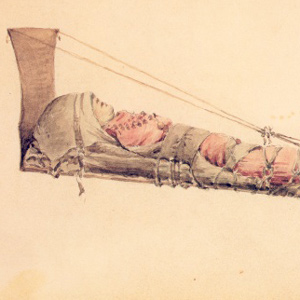

Fort Rock, The Dalles, OR Visiting Indians give the captains an opportunity to compare the languages and customs of the Sahaptian and Chinookan Peoples living above and below The Dalles of the Columbia.
